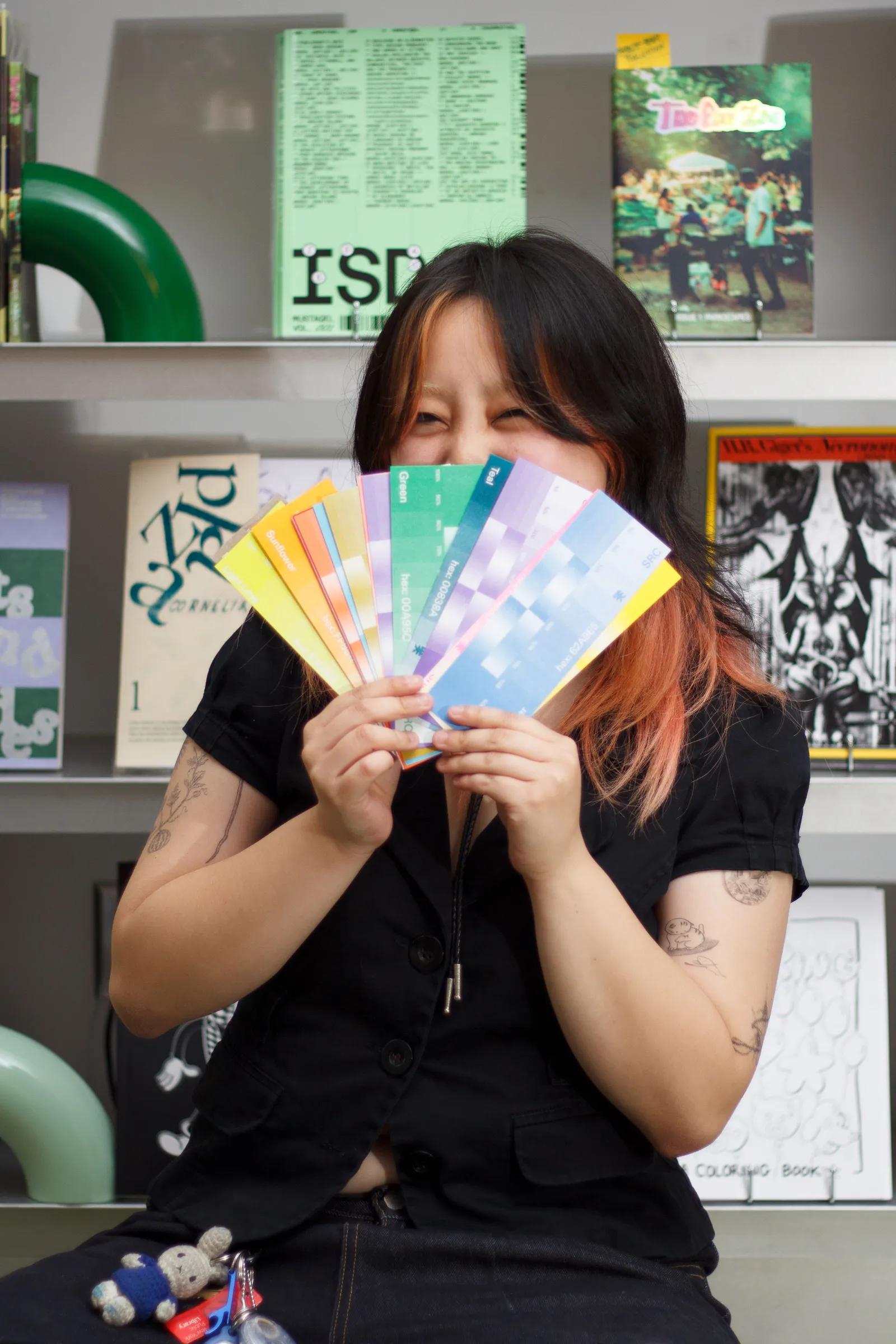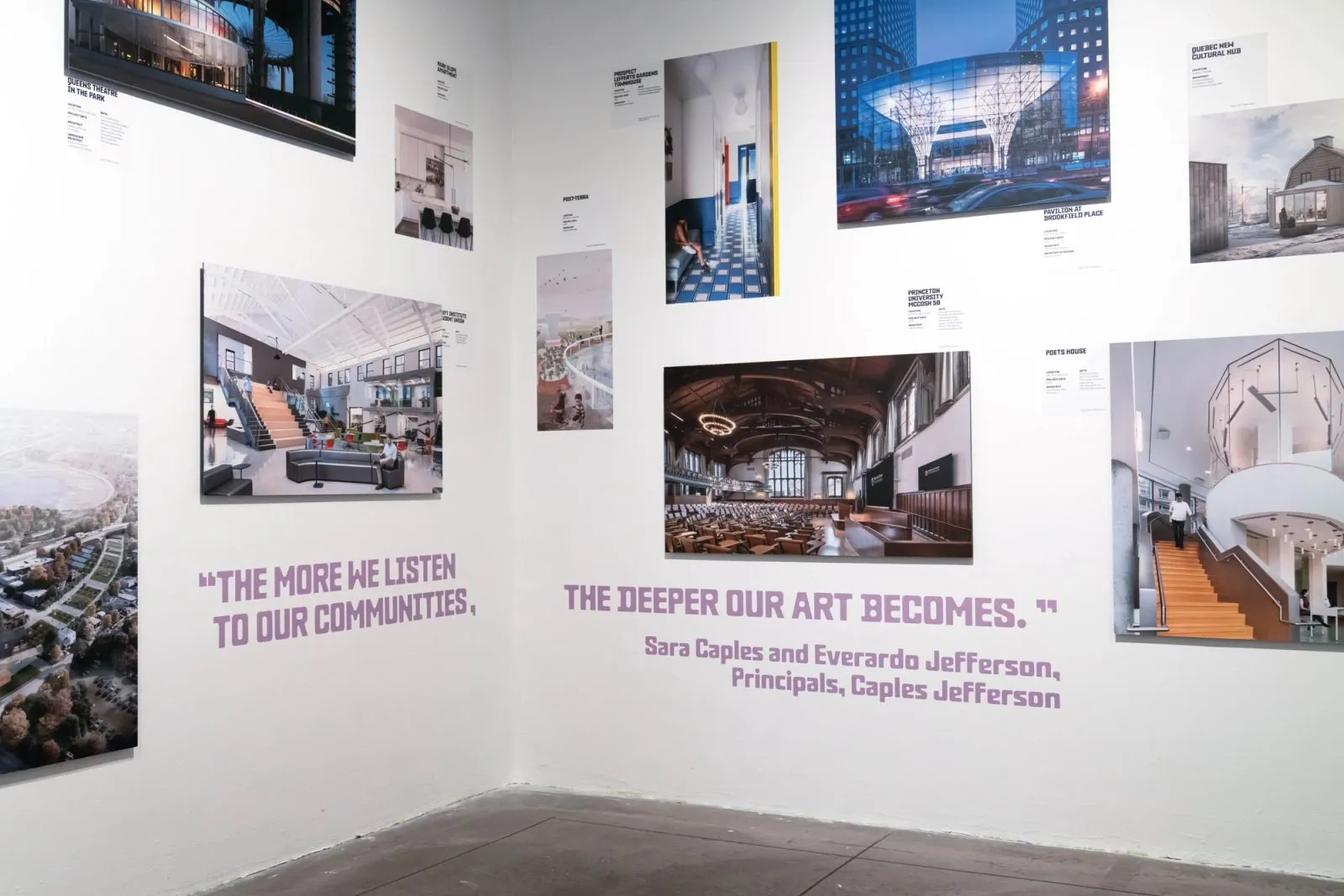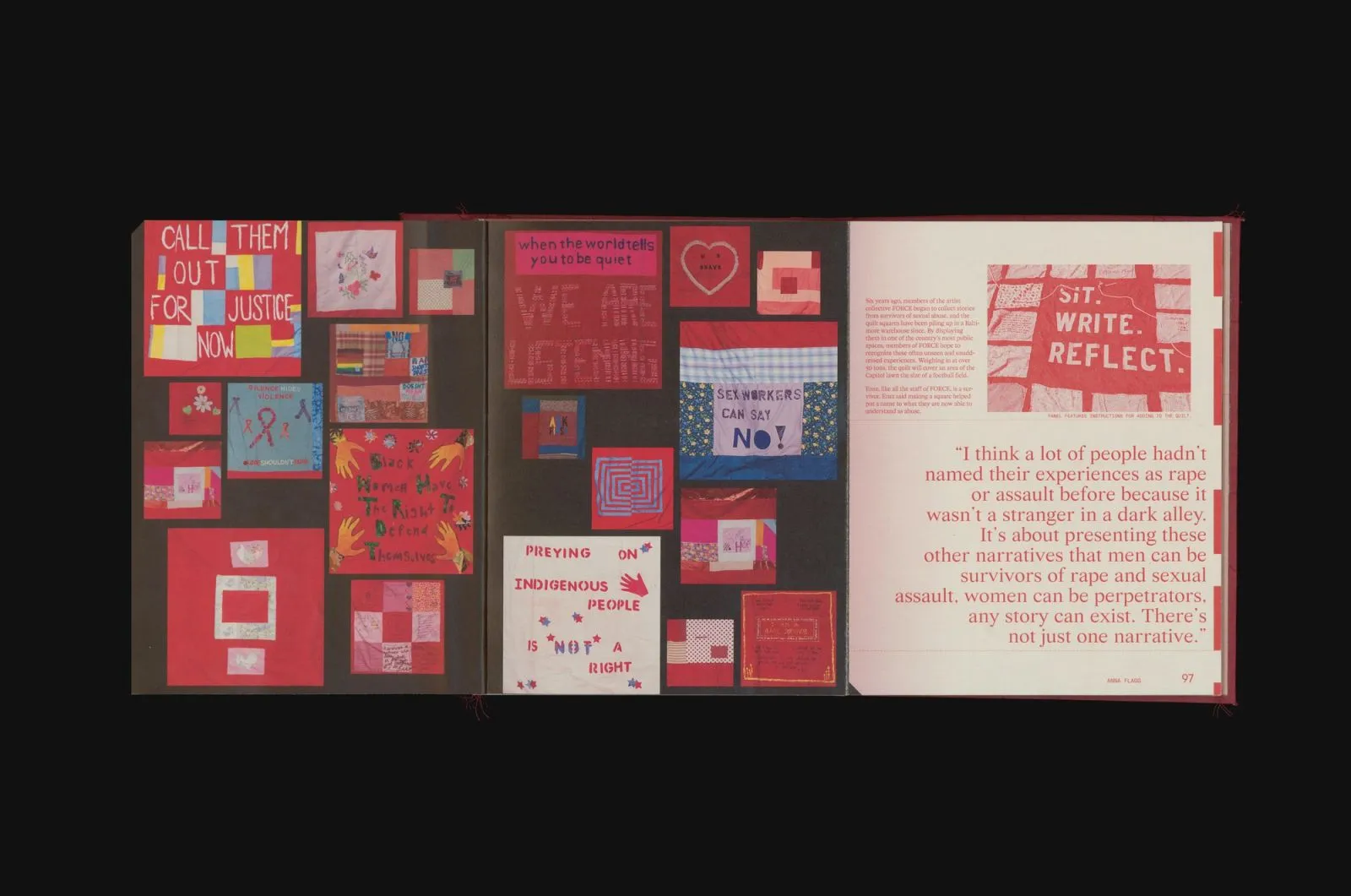
Sarah Wang’s career is just beginning, but their design work already spans cultural institutions, independent publishing, and community-focused projects. Based in Brooklyn, they blend a sharp eye for editorial and publication design with a deep commitment to socially engaged storytelling.
Sarah currently works as a graphic designer at Pacific, where they create publications and editorial materials for museums and cultural organizations. Their projects often require balancing aesthetic clarity with the need to communicate complex ideas — skills that have become central to their approach. “I’m always thinking about how design can invite people in, rather than make information feel exclusive,” they say.
Alongside their work at Pacific, Sarah manages print production and design projects at Secret Riso Club, where they bring both technical precision and creative direction to commissioned and in-house publications. From pre-press preparation to final binding, Sarah ensures that each project reflects the client’s vision while maintaining the studio’s experimental, community-driven ethos.

In 2023, Sarah co-founded Tiger Balm Press with fellow queer Asian designers Thuy Tran and Allison Fong. While the press is known for its risograph printing, Sarah sees it as an extension of her design practice — a space to explore typography, composition, and narrative outside of client briefs. “Our work is deeply collaborative,” Sarah explains. “Every decision, from layout to color to paper choice, is rooted in our shared values and the communities we serve.”
One of Sarah’s most meaningful projects is their fellowship with the Center for Urban Pedagogy’s Making Policy Public program. Partnering with illustrator Ryan Davis and housing justice groups, Sarah is designing accessible printed materials that explain the Good Cause Eviction Law, a notoriously complex piece of legislation. “This project is teaching me how design can bridge the gap between policy language and everyday understanding,” they say.

For Sarah, the role of a graphic designer extends far beyond creating something visually appealing. They see design as a tool for care, clarity, and connection — especially when serving underrepresented voices. Whether producing an exhibition catalog, a housing rights poster, or an experimental zine, Sarah approaches each project with the same guiding question: Who is this for, and how can it serve them best?
2016-03-21